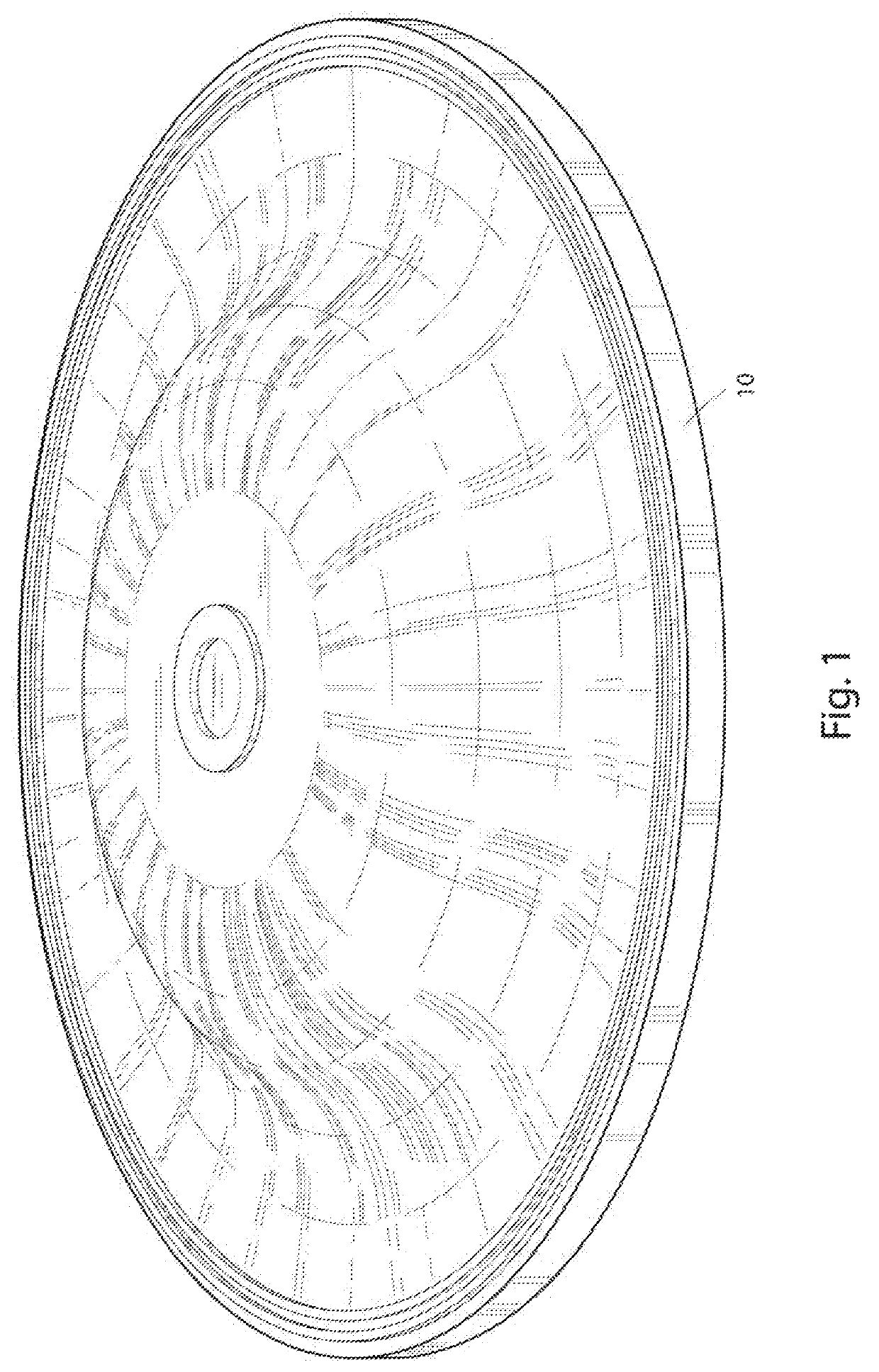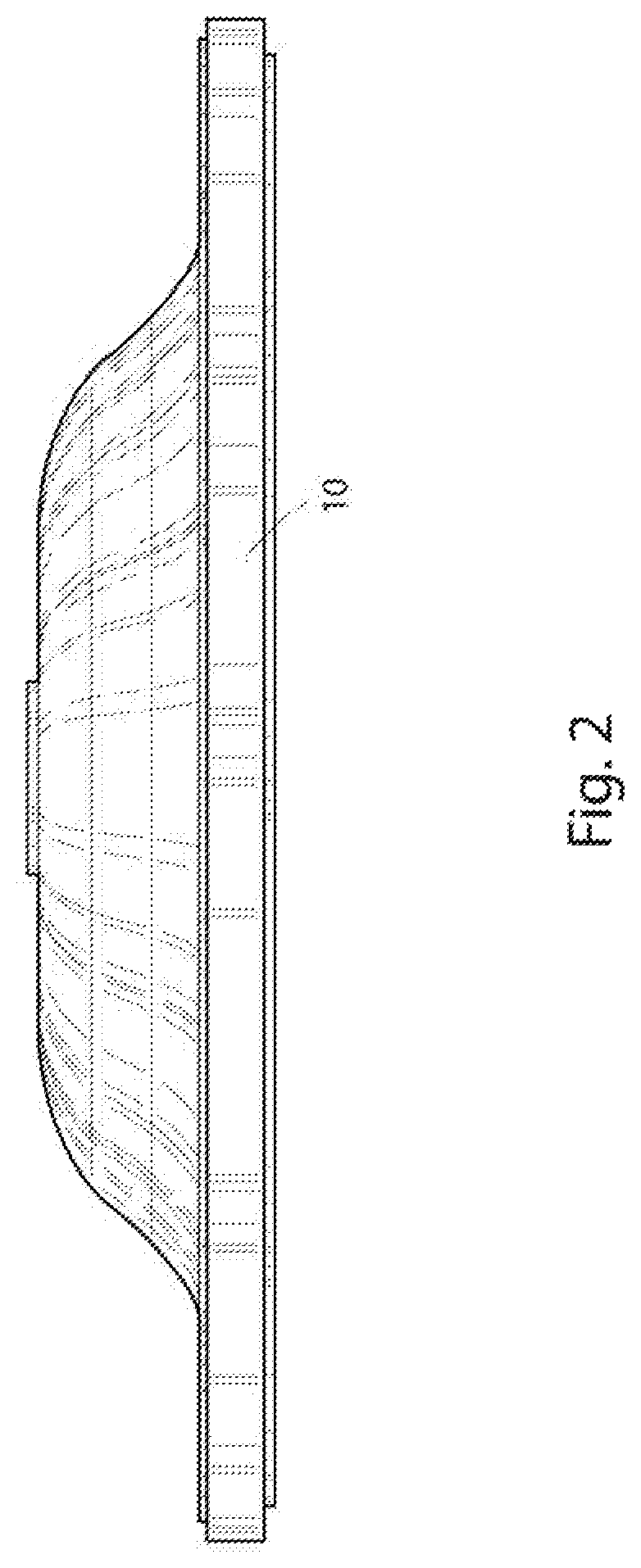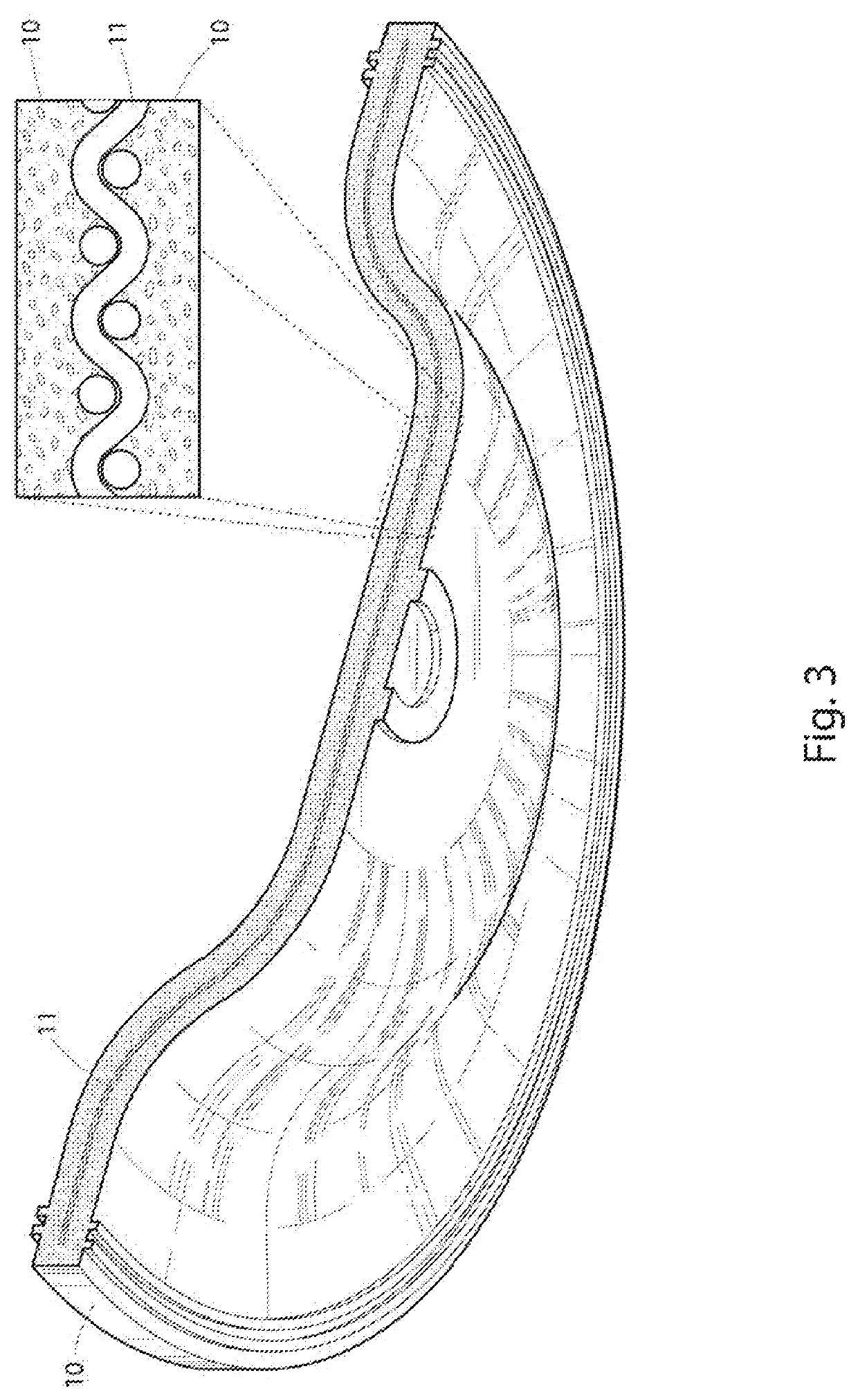Balanced crimp substrate reinforcement for molded products
a technology of crimp substrate and reinforced products, which is applied in the direction of weaving, engine diaphragms, brake cylinders, etc., can solve the problems of high scrap rate, defectively formed parts, and high scrap rate of molded products, so as to reduce the scrap rate of such products, reduce the rate of product defects, and facilitate the overall structural stability
- Summary
- Abstract
- Description
- Claims
- Application Information
AI Technical Summary
Benefits of technology
Problems solved by technology
Method used
Image
Examples
Embodiment Construction
[0019]For a better understanding of the invention and its operation, turning now to the drawings, FIGS. 1-3 illustrate preferred molded product 10 including preferred substrate reinforcement 11. As depicted specifically in FIGS. 1 and 2, molded product 10 is represented as a rubber brake master cylinder diaphragm, but it is anticipated that substrate reinforcement 11 may improve the scrap rates of a wide variety of molded product, both rubber and non-rubber, and therefore it should be understood that the representations of molded product 10 are included herein for context, but should not be construed as a limitation.
[0020]As described previously, the non-specific inclusion of woven material within molded products is known in the art, so the general details such as length, width, and weave patterns of such materials will not be the focus of the instant disclosure. However, indiscriminate inclusion of woven members within molded products has been demonstrated to result is high scrap r...
PUM
| Property | Measurement | Unit |
|---|---|---|
| modulus of elongation | aaaaa | aaaaa |
| isotropic elongation | aaaaa | aaaaa |
| isotropic elongation | aaaaa | aaaaa |
Abstract
Description
Claims
Application Information
 Login to View More
Login to View More - R&D
- Intellectual Property
- Life Sciences
- Materials
- Tech Scout
- Unparalleled Data Quality
- Higher Quality Content
- 60% Fewer Hallucinations
Browse by: Latest US Patents, China's latest patents, Technical Efficacy Thesaurus, Application Domain, Technology Topic, Popular Technical Reports.
© 2025 PatSnap. All rights reserved.Legal|Privacy policy|Modern Slavery Act Transparency Statement|Sitemap|About US| Contact US: help@patsnap.com



